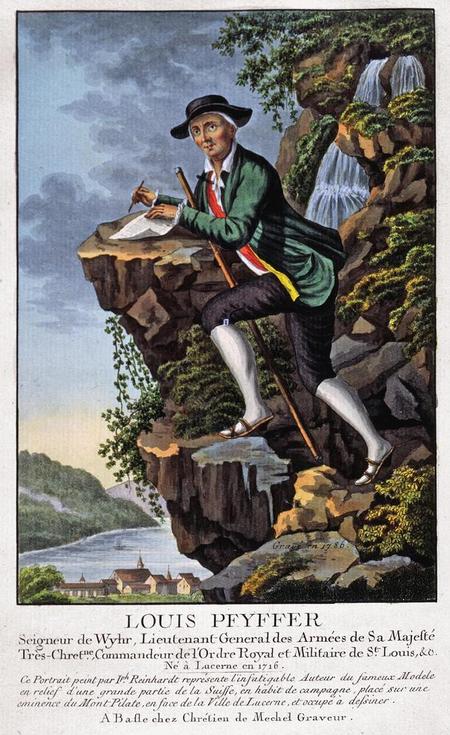Your cart is empty.
THE PFYFFER RELIEF
The Pfyffer relief is a pioneer work of the world-famous Swiss cartography. In terms of cultural history, it is the most valuable object in the Glacier Garden. It shows Central Switzerland from the air with Lake Lucerne in the center. It was built in decades of work by Franz Ludwig Pfyffer (1717-1802). For the first time, the lakes and mountains of Central Switzerland were depicted exactly on scale. Long before the advent of tourism in Lucerne, the Pfyffer relief was known throughout Europe. Many scholars came to Lucerne to study it. The relief is on permanent loan from the Lucerne Corporation.
Pfyffer used plaster mixed with powdered charcoal, clay, pitch and crushed bricks as modeling material. The surface is designed with colored wax.

Franz Ludwig Pfyffer von Wyher (1716 – 1802)
Pfyffer came from an influential Lucerne patrician family. Already at the age of 10 he went to Paris, where his military career in foreign service began. Inspired by French fortress models, Pfyffer began building mountain reliefs in his spare time at a young age.
For four decades, Pfyffer roamed Central Switzerland, sketching panoramas and measuring the angles between the landmarks with the most modern equipment of the time. Pfyffer also set new standards worldwide in terms of measuring the height of the terrain.